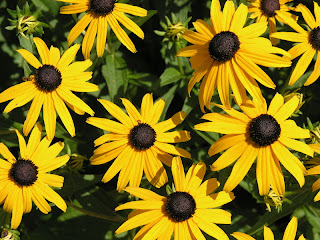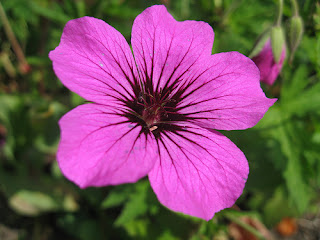For my
next few posts I’m going to focus on something a little different. I’ve been
thinking for some time about a series on “neglected daisies”: erigeron,
pyrethrum, gaillardia and coreopsis. Or, if you prefer, fleabane, painted
daisy, blanket flower and tickseed. I’ve used all four of them in my garden,
and they are wonderful plants, with the last three flowering for months.
Erigerons tend to do it all in one go, but it’s a great go while it lasts.
Some of the prairie daisies like helenium, coneflower, rudbeckia moved to centre stage when the
New Perennial movement took off in the nineties, with its emphasis on
structure and shape. (
Piet Oudolf’s book had five categories of shapes: spires,
umbels, globes, plumes and daisies.)
Their enduring seedheads guaranteed them a place in a garden that needs to look good when it dies back. Other daisies, however, were not touched by
the spotlight of fame, and I think it’s time they got their moment to shine.
I hope that these posts inspire you to plant some, and I hope that you enjoy them as much as I did.














